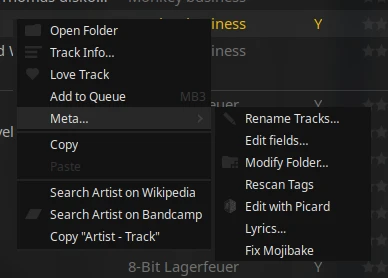

It uses amazingly low resources while gaming. Never had such a thing on Windows back then.
Passionate game collector, film enthusiast, developer & completionist. 📝 Journals & Profiles: https://linktr.ee/berny23


It uses amazingly low resources while gaming. Never had such a thing on Windows back then.
I implemented Duplicati as a fast, easy and adaptable backup solution at my workplace. It’s itself running as a docker stack on every node in the swarm. Even migration to new servers is possible, because it can restore file permissions and ownership too. Just give it access to either the volumes path of the host or just the whole host file system.
Can be accessed via web interface, password protected. I actually recommend the image by the linuxserver community instead of the “official” for a simple, no-config deployment that starts up in seconds. Just add a data volume and your host bind in your compose file and that’s pretty much it.
Change is always hard, be it Windows 7 to Windows 10 or 11. The German company Tuxedo Computers has pretty nice Linux laptops for beginners and professionals, this is what made the change easier for my parents: http://tuxedocomputers.com/ They even offer RTX 4090 custom laptop builds, but for the screens they still have no OLED option when I looked the last time.
Bibata Modern: https://github.com/ful1e5/Bibata_Cursor
I did install it via package manager back when I used this distro and it worked well, but some weeks after, I switched distros to Kubuntu. Now I’m using Arch btw. with latest KDE Plasma (I recommend this).
For pirated games, I recommend Bottles installed as a flatpak. That’s because it has a per-game toggle for sandboxing the app, not giving it access to your complete home folder and optionally no network access or audio output.
Even when using trusted sources, you can never be safe enough. Bottles with sandboxing will at least protect your files from crypto trojans and prevent you from becoming part of a botnet. It should not have any impact on performance.
Visual Studio is not available on Linux and not really working in Wine, sadly. You can use IntelliJ IDEA as a good alternative, it supports Linux officially and has a Flutter plugin.
For a beginner, Linux Mint is perfect. It is based on Ubuntu which is based on Debian, so you can follow most tutorials written for either distribution (like the installation instructions for IntelliJ IDEA or other software that is not available from the APT package manager).


snap instead of deb


Glad you like my recommendation! :)


I hope that too, this is by far the best player I have tried on Linux.


Have fun!


You can use either y> or y< in the generator settings of a playlist to sort by year. You can use ypa to sort by year per artist.


Me too, I found it on the bottom of a audio player list in the Arch Linux wiki. Oh, I use Arch btw. xD


Thanks :)


Yes, you can even generate new playlist with right-click from an existing one (most played etc.).
You can also combine multiple playlists/libraries to another playlist like this: s"My First Playlist" s"My Second Playlist" a
https://github.com/Taiko2k/TauonMusicBox/wiki/Generator-Codes


My music library is local. I use Jellyfin only for movies and series currently.


It always uses local lyrics when available, otherwise you have the option to right-click sidebar → search for lyrics (supports Genius and lyrics.ovh).
These are the options for metadata:

For actual tag management, I’ve used puddletag only. But there is some batch rename functionality in this player:



Spot on analysis.
I use MPV as movie and general media player with my custom config as well as auto-crop and URI copy/paste scripts. It works better than any other media player I tried in the last 10 years. I only use VLC for DVD menus, but it sucks even at that task, because the cursor gets stuck and the menus lag even when playing from SSD folder.
I use Tauon Music Box as music player because of its design, easy playlist/library customizability and Jellyfin integration. I also pay for spotify and use spicetify with custom skins if the songs are available there.
Kröhnkite as real auto-tiling solution with KDE Plasma.
But I’m on Arch btw., so there is not much default software apart from what the KDE meta packages contain.